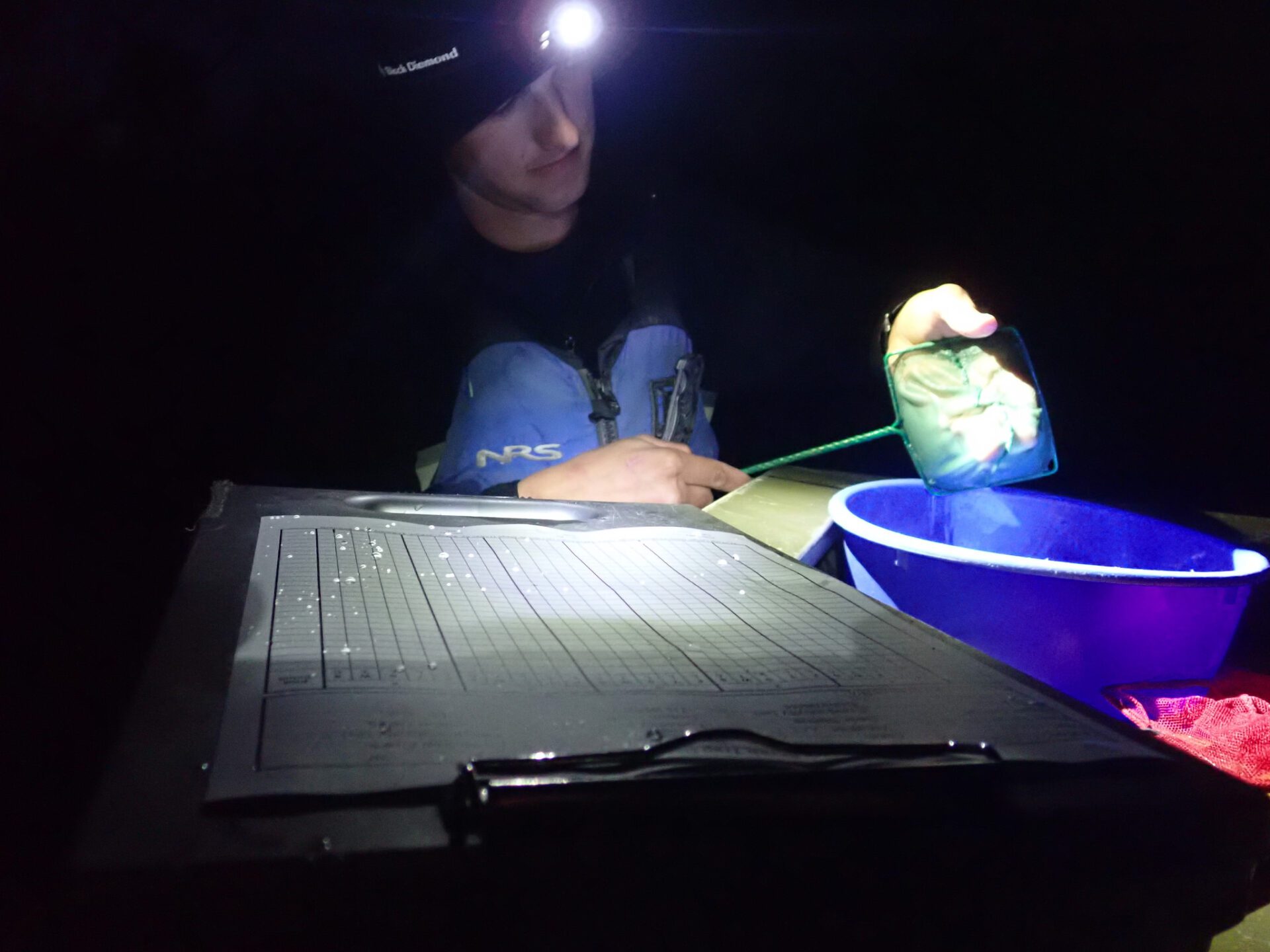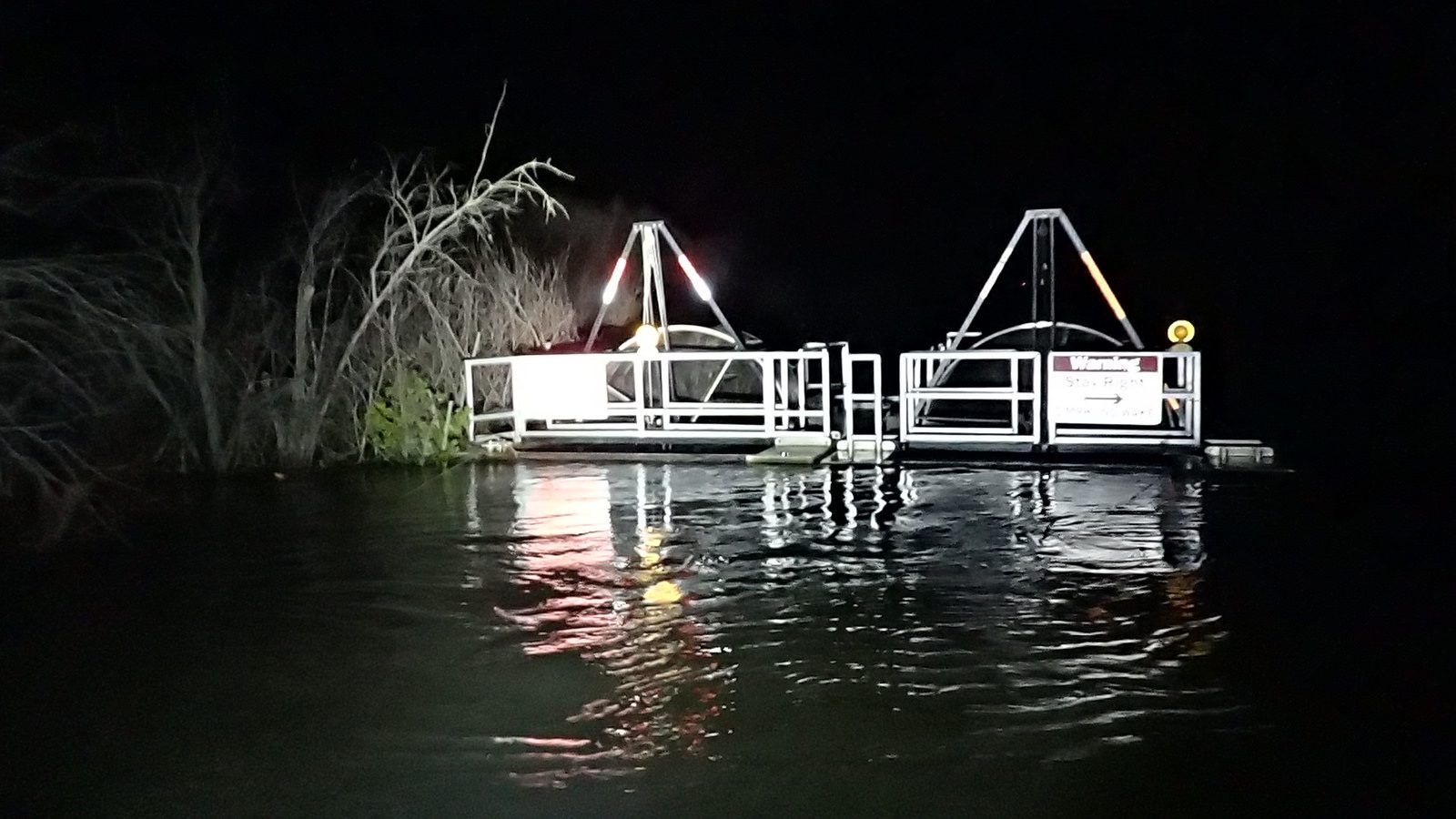Wednesday April 18, 2018

We often have to work some pretty late hours at FISHBIO, sometimes spanning the entire night. This unconventional schedule is partially due to rotary screw trap efficiency tests. Since it is impossible to catch every fish in the river with a single trap, we need to calculate the percentage of fish that we do catch. This is done with an efficiency test, which consists of gathering a large group of fish in our trap, marking them with temporary photonic colored dye, and releasing them upstream. Once we find how many marked fish have been recaptured by the trap, we can use this information to calculate the efficiency of the trap. After doing several efficiency tests, we can estimate the trap’s catch percentage for the season.
There are many factors that can influence the outcome of an efficiency test. Weather, river conditions, fish behavior, and time of day all play important roles in final result. Weather can change the number of fish we recapture, since rain can prompt fish to migrate, and turbidity and the amount of river flow can change how the fish swim downriver. When we release the marked fish for an efficiency test, we let out a few at a time to try to mimic their natural swimming pattern and prevent them from clumping up. Time of day is important because juvenile fish like to swim in the darkness to avoid predation. This is why we wait until after sunset to start releasing fish, and check the trap for recaptures throughout the night.

Working at night can present challenges we don’t always encounter during the day, from mysterious sounds to spooky shadows. We see critters wandering through the trees–or feel like they are watching us. It is also challenging to walk in the river at night, with only a small headlamp to light our path. When releasing the fish, we turn off all lights so the juvenile fish do not get attracted to the light and group around it. The entire releasing process takes place with only the moonlight and stars lighting the nets full of fish. The river takes on an entirely different perspective at night when it is pitch black – it takes getting used to but is exciting to experience.
